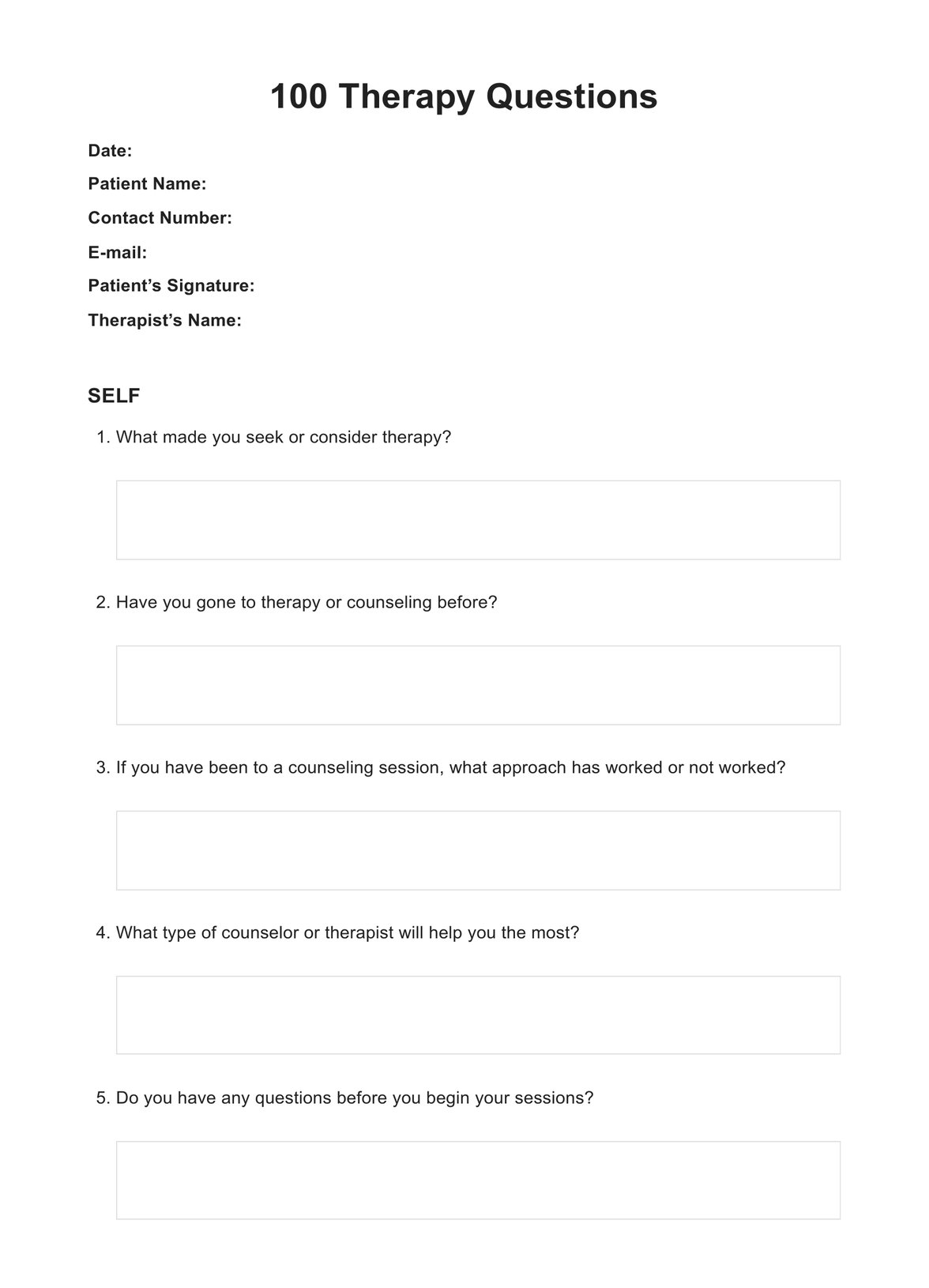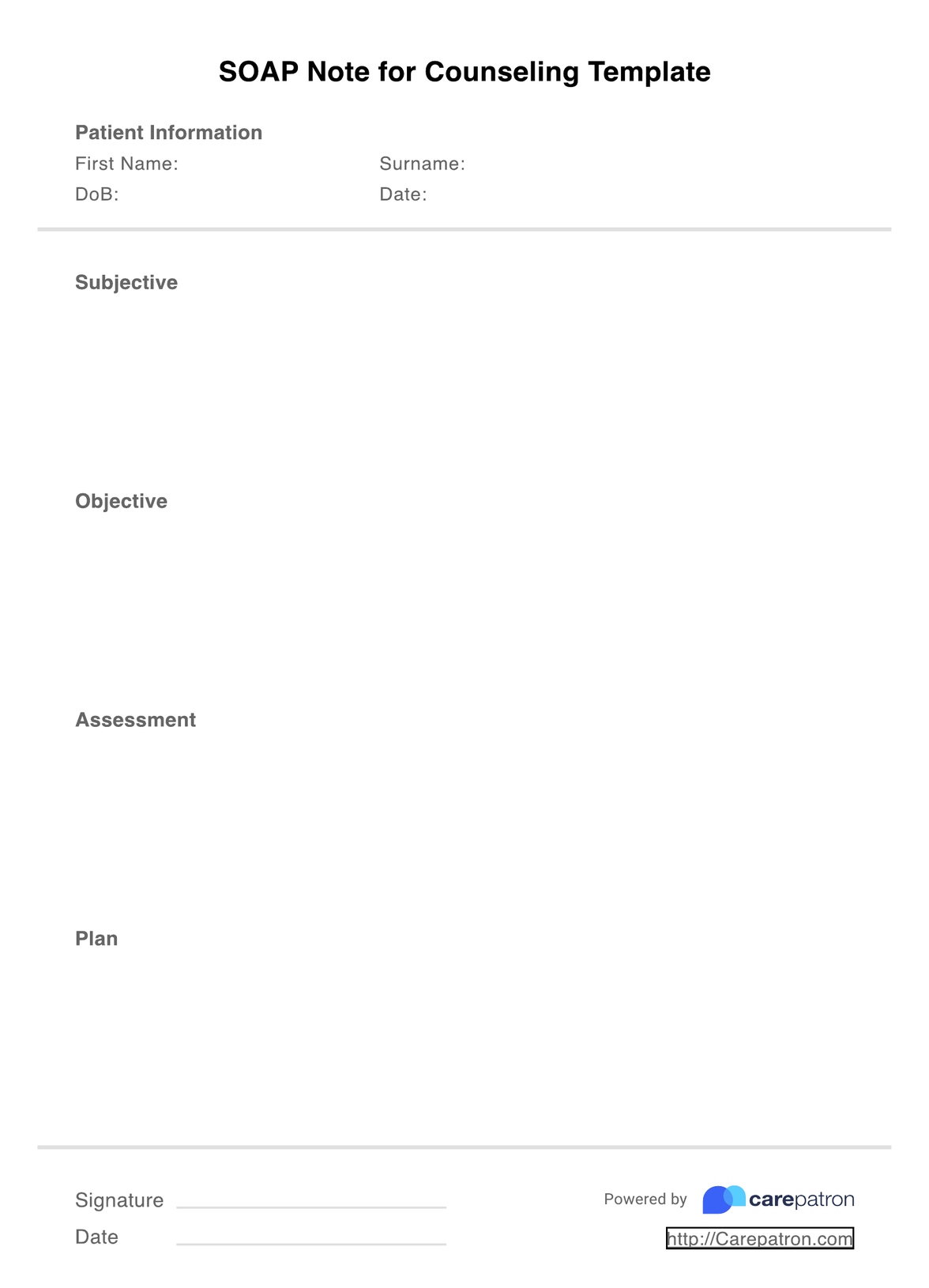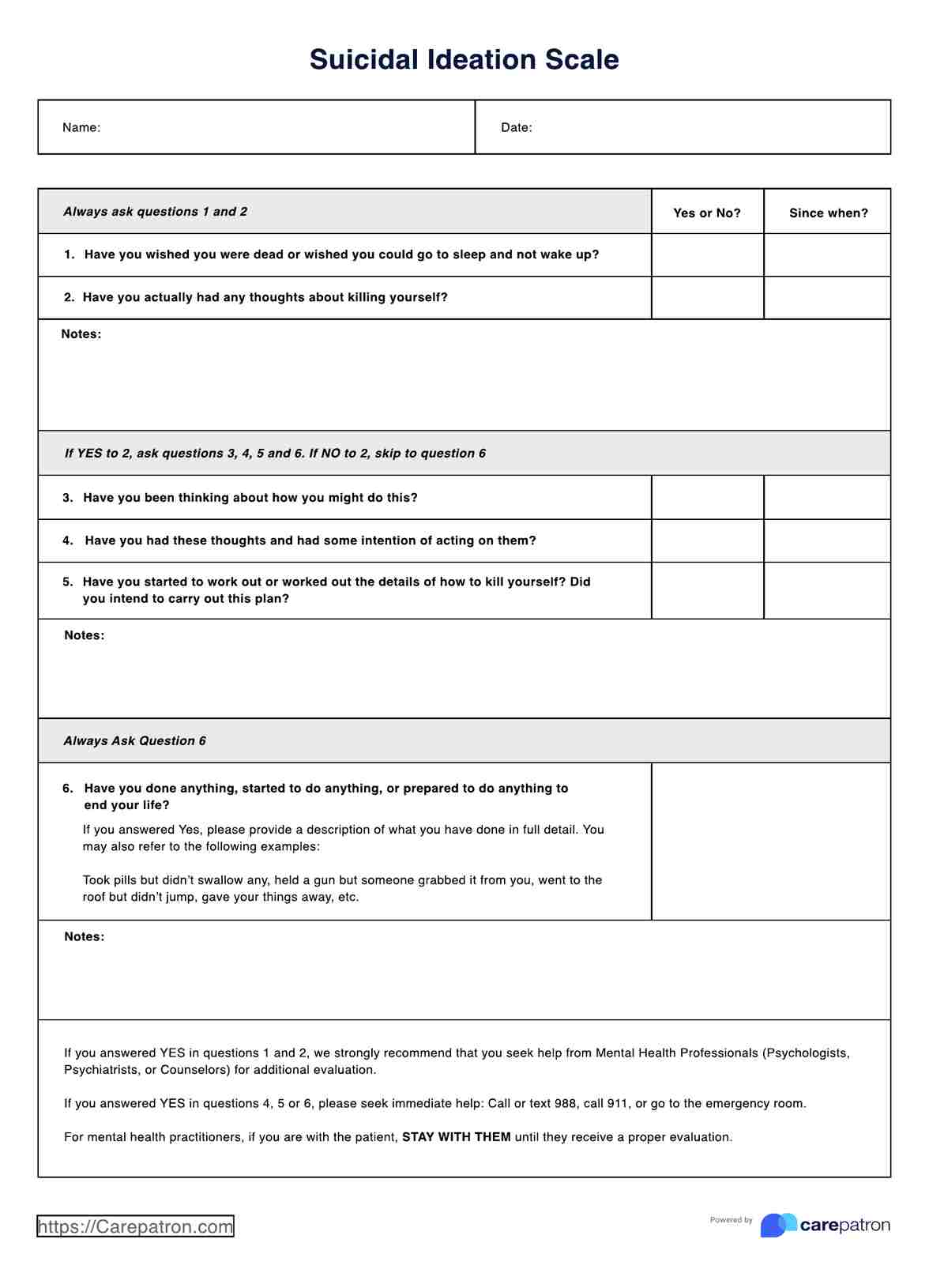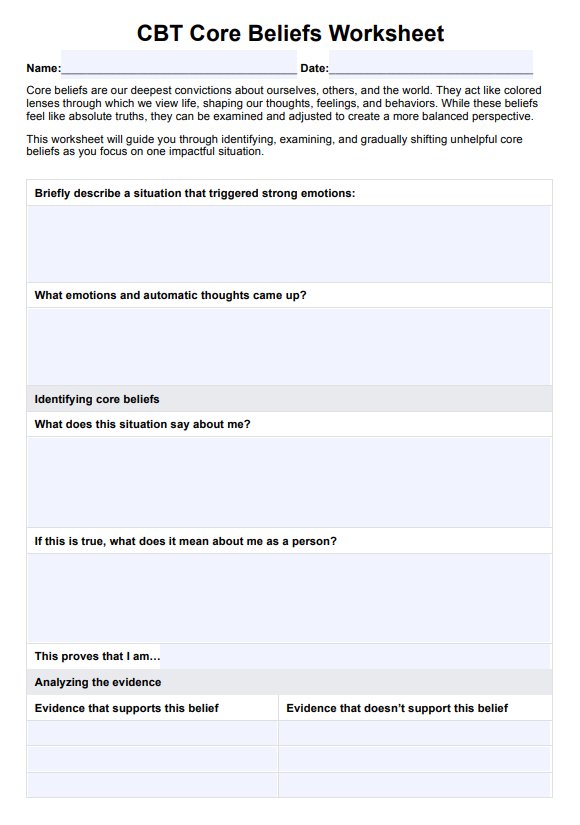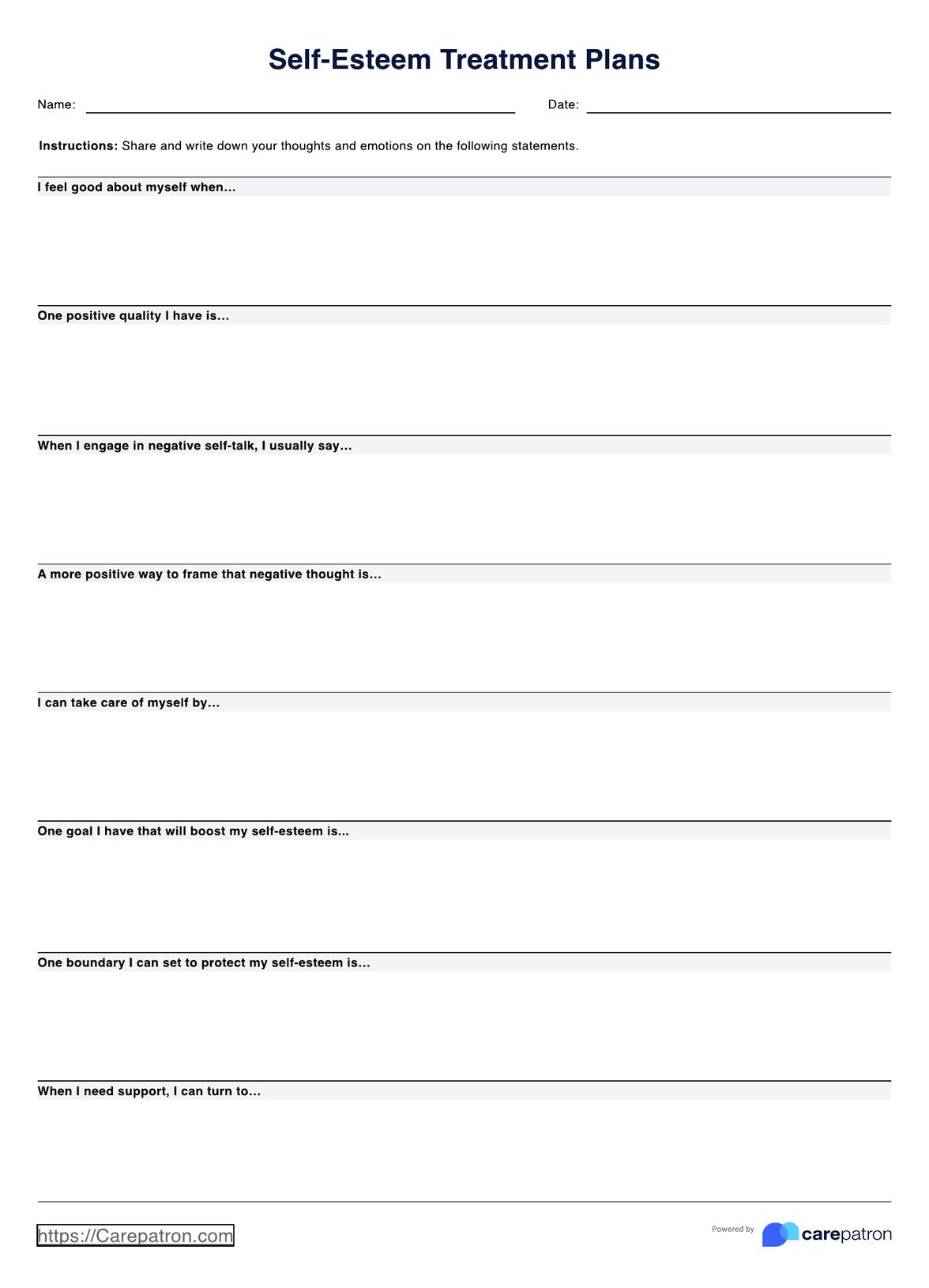Values Gap in Relationships ACT Worksheet
Strengthen bonds in counseling using the Values Gap in Relationships ACT Worksheet. Our free PDF aids practitioners in fostering profound client relationships.


What is Acceptance and Commitment Therapy?
Acceptance and Commitment Therapy (ACT) is a distinctive form of psychotherapy that emphasizes embracing acceptance to address and navigate negative thoughts, emotions, symptoms, or challenging life circumstances. Rather than attempting to eradicate these unwelcome experiences forcibly, ACT encourages practitioners and clients to acknowledge them openly and compassionately.
An essential pillar of revolves around the significance of values and aspirations in cultivating a rich and fulfilling life. This therapeutic approach underscores the importance of actively participating in endeavors aligned with one's core principles, irrespective of the hurdles that may be present.
ACT involves guiding clients toward uncovering their intrinsic values and visualizing the life they wish to manifest. Through an array of mindfulness exercises and cognitive techniques, individuals learn the art of observing their thoughts and emotions without falling into patterns of judgment, thereby fostering an elevated sense of self-awareness and mental adaptability.
By synergizing techniques of acceptance and commitment, practitioners are empowered to steer their clients toward purposeful decision-making and conscious actions that contribute to their overall wellness.
Values Gap in Relationships ACT Worksheet Template
Values Gap in Relationships ACT Worksheet Example
How to use the Values Gap in Relationships ACT Worksheet
The Values Gap in Relationships ACT Worksheet helps navigate relationship challenges through the lens of Acceptance and Commitment Therapy ACT. Here's a comprehensive guide on effectively using the worksheet:
Step 1: Acquire the Resource
Commence by accessing the "Values Gap in Relationships" ACT Worksheet. You can opt for a tangible copy or create a digital version to suit your convenience.
Step 2: Define the Gap
Within the "Gap Description" segment, articulate the primary disparities present in your relationship. Utilize neutral language to outline these differences objectively, creating a basis for open and unbiased discussion.
Step 3: Probe Emotional Dimensions
Under the section labeled "Emotional Landscape," recognize both surface-level emotions (e.g., frustration, disappointment) and delve into the layers beneath to unveil fundamental sentiments (like vulnerability and insecurity).
Step 4: Embrace the Discrepancy
In the "Embracing Discrepancy" category, acknowledge and embrace the differences that have emerged in your relationship. This step validates the existence of differing values and perspectives.
Step 5: Envision Your Partner's View
Step into your partner's shoes in the "Partner's Perspective" segment. Delve into their emotions, reactions, and potential ways the values gap might impact them. Doing this encourages empathy and a holistic understanding.
When would you use this Values Gap in Relationships ACT Worksheet?
The Values Gap in Relationships ACT Worksheet can be used when confronted with conflicts in relationships that stem from varying core values. These discrepancies can often lead to misunderstandings, communication breakdowns, and emotional distance. This worksheet is particularly beneficial when partners or individuals struggle to comprehend each other's viewpoints due to stark value differences.
It's an essential resource for therapists and counselors aiming to facilitate productive dialogue between partners, helping them bridge the gap in understanding and fostering harmonious growth.
Individuals navigating relationships independently can utilize the worksheet to delve into their values and those of their partners, promoting empathy, constructive communication, and shared personal development.
What are the benefits of using this Values Gap in Relationships ACT Worksheet?
Our Free Values Gap in Relationships ACT Worksheet presents a range of valuable advantages in navigating relationship dynamics:
Enhanced Understanding of Value Disparities
The worksheet encourages individuals to outline the differing values that underlie relationship conflicts objectively. By articulating these disparities, individuals gain clarity on the core issues contributing to tension, fostering a more profound comprehension of the root causes of disagreements.
Improved Communication and Empathy
Engaging with the worksheet prompts open and constructive dialogue between partners. Describing emotional landscapes and envisioning each other's perspectives encourages empathetic communication, enabling partners to grasp the emotions and viewpoints of one another more fully.
Facilitated Alignment of Actions with Values
Individuals can identify actions that align with their authentic selves by delving into their core values and aspirations. This alignment fosters intentional behaviors that contribute to the relationship's growth and well-being, ensuring that actions are congruent with personal values.
Strengthened Relationships through Constructive Engagement
The worksheet promotes a collaborative approach to addressing differences, emphasizing cooperation rather than conflict. As individuals work together to bridge the values gap, they build a foundation of shared understanding, promoting a harmonious atmosphere and shared growth.
Commonly asked questions
The duration varies, but allocating an hour for completion is recommended for thorough exploration.
This worksheet fosters deeper insight, understanding, and constructive action in addressing relationship differences.
It's ideal for addressing conflicts arising from differing values and enhancing relational understanding.
Therapists, counselors, and individuals seeking to bridge value-based gaps within relationships can benefit from this tool.


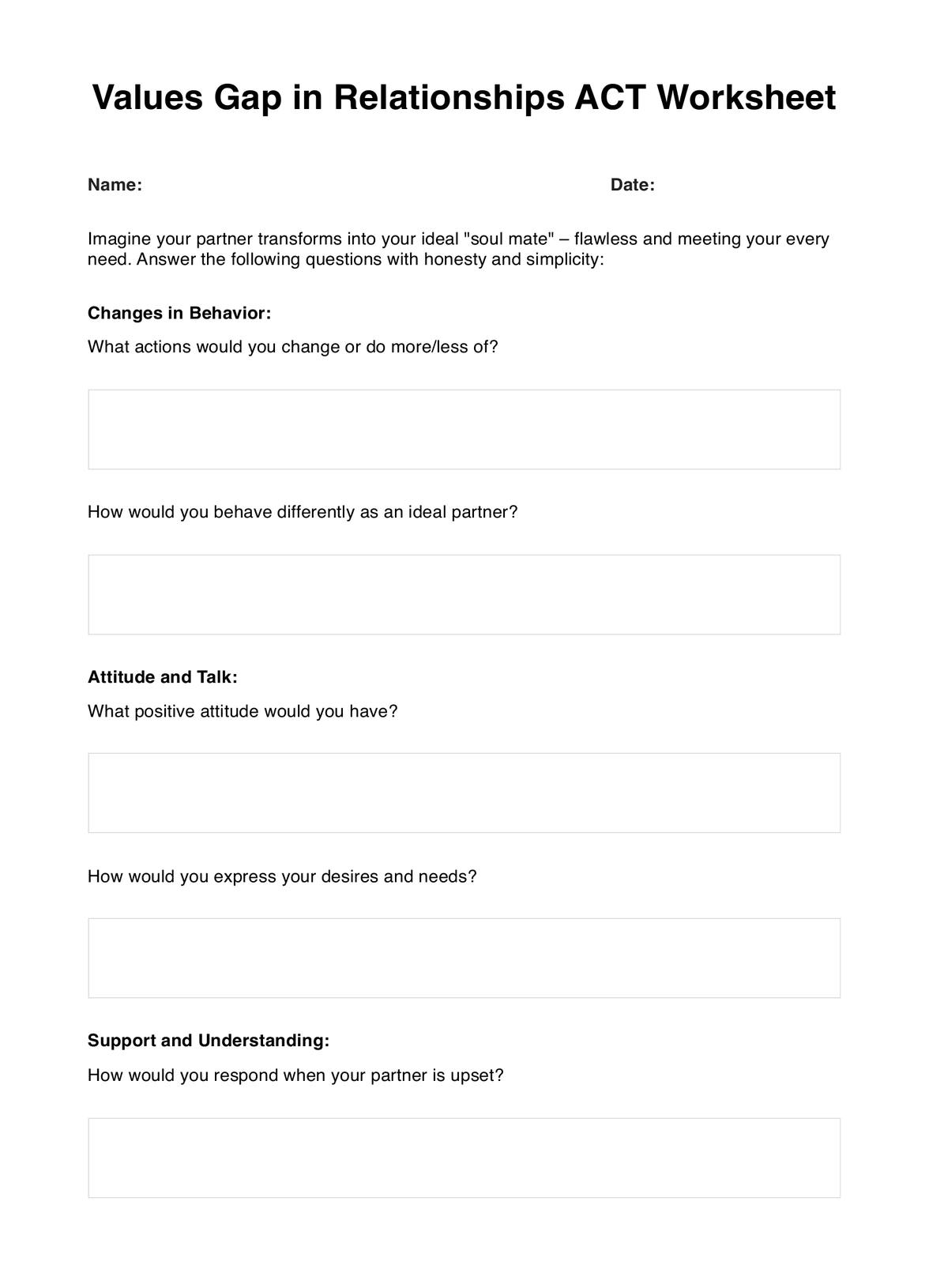
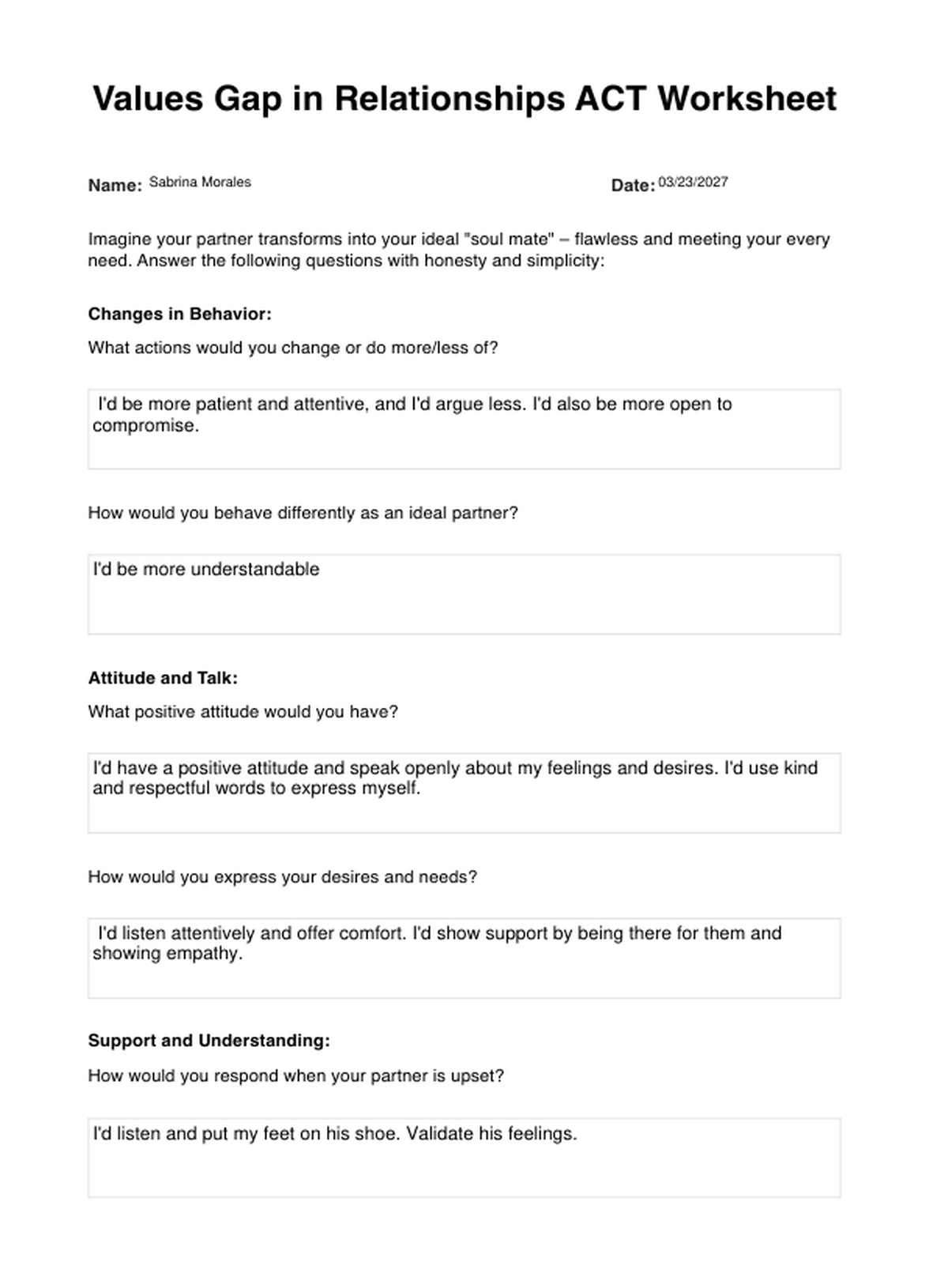

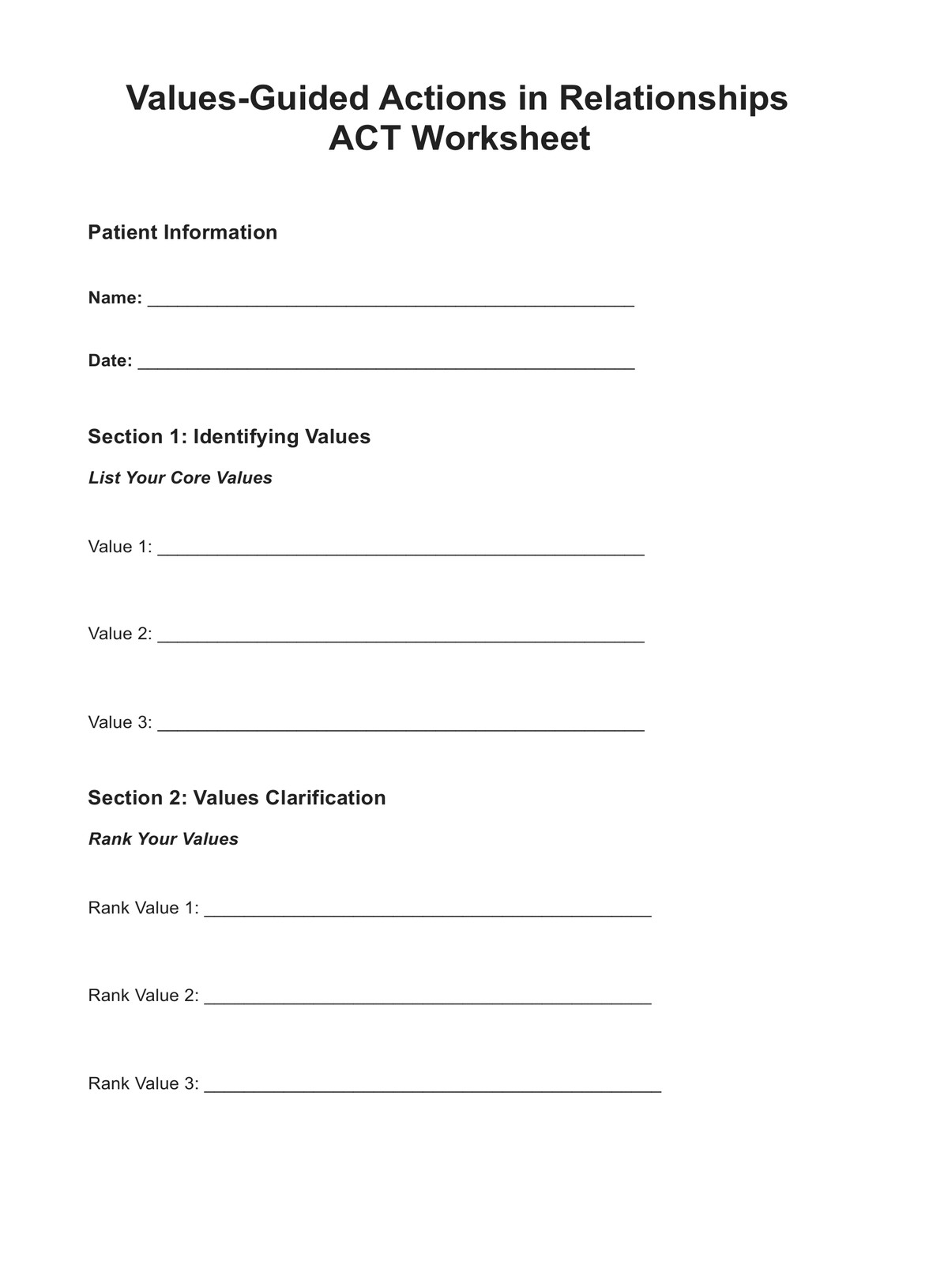













-template.jpg)






















































































